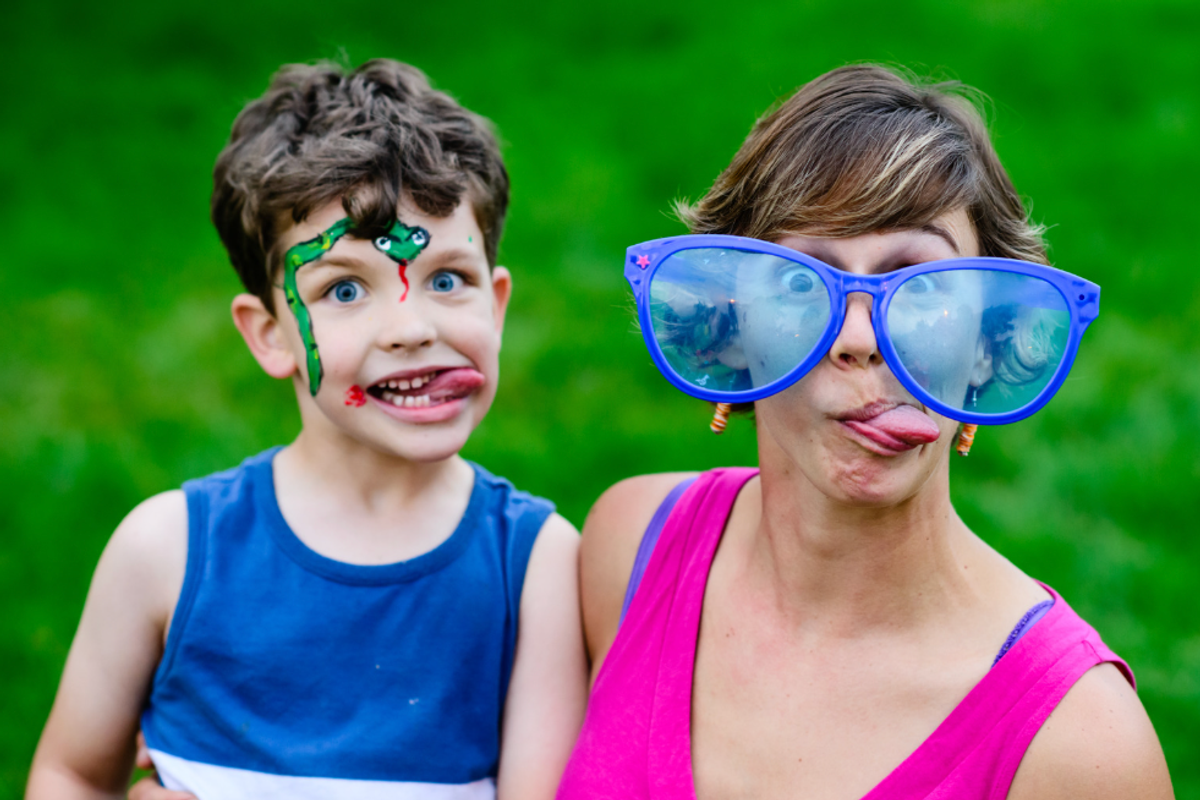A new study from psychologists says humor might be the key to successful parenting
Good parenting is a joke.

Humor can help you bond with your child while also boosting their growing brain
Being a parent is tough. If you are one, you probably read many articles, watched a lot of videos, or asked other parents for advice regarding structure, discipline, consistency, and other qualities that go into raising a child. But researchers found something equally as important as all of those parental virtues: humor.
Researchers and psychologists from the Public Library of Science and the Penn State College of Medicine found that humor played a huge role in successful parenting in a recent study. In a survey of 312 parents or would-be parents, 55% reported that humor was a significant part of their childhood from their parents and that 72% found humor to be an effective parenting tool. Out of those surveyed, the vast majority who reported having a strong bond with their parents as kids and now as adults also had humor as a part of their upbringing.

So how does that work? You’d probably want a fun relationship with your child but at the same time not appear to be a joke to them either. If your young kid has to approach you with a problem, you don’t want them to be afraid that you won’t take them seriously. You also don’t want them to continue bad behavior because they think it’s funny and ignore you when you tell them to stop.
Well, humor on its own won’t help parents, but using it correctively and implementing it constructively, such as when tensions are high, can benefit both you and your kid.
“While parent-child relationships are more loving than business relationships, stressful situations happen a lot when parenting,” said Lucy Emery, one of the authors of the study. “Humor can help diffuse that tension and hierarchy and help both parties feel better about a stressful situation.”

So in terms of applying humor into your parenting style, it’s an effective to use it to diffuse tense situations (like when a child’s having a tantrum or when they feel bad after being corrected or disciplined), model creative problem solving to your children, and just plain experience shared joy between you and your kid.
Many professionals in pediatrics and educators also say that humor not only promotes stronger bonds between parents and their children, but also helps child development. According to Children’s Minnesota Hospital among other experts, instilling a good sense of humor in a child helps them see situations in more perspectives such as when a certain situation could be funny or could be dangerous. Humor also allows them to laugh at themselves when they make mistakes as opposed to being angry or disappointed that they messed up. On top of that, frequent laughter is just healthier as it reduces stress, lowers blood pressure, and improves digestion on top of just making life in general more fun.

So if you’re a new parent and feeling stressed, take a moment. Instead of being upset that your son spilled their milk on the floor for the fifth time today, laugh at how ridiculous that is and tell a funny story about how clumsy you used to be as you both clean it up. If you and your kid had a tense fight, tell them a joke to let them know everything is okay between you two. And overall, just laugh with your kid. It’s good for them and it’s good for you, too.

- Parents share hilariously relatable photos before and after they had kids. ›
- Mom's hilarious 'mom police' skits have mothers everywhere nodding and chuckling ›
- People kept telling me to watch 'Bluey.' I still was not prepared. ›
- "How to use a printer" satire perfectly captures our frustration with modern technology - Upworthy ›

